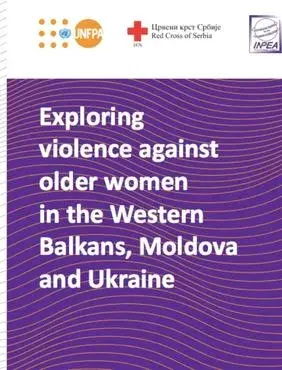Violence against older women is a problem that has been insufficiently researched. Despite the progress made in the last few years, there is still a dearth of successful interventions, including best practices, for ensuring the safety of this population. While it is well known that violence has adverse consequences on both the physical and mental health of older women, most research and existing evidence focuses on women during their reproductive years (15-49). There is very little data on the types and patterns of violence against women over 50 years.
In addition, there is lack of an adequate theoretical framework and insufficient research to shed light on violence against older women, and data collection is not sufficiently systematized. International intimate partner and non-partner prevalence studies on violence against women usually don’t include older women as subjects, much less reflect the intersectionality of their life experiences in rural and urban areas, ethnicities like Roma and other factors. Violence against older women affects all areas of their lives. It is both a problem of societal and gender inequality. Gender-based violence does not stop as women age and is a human rights violation.
Despite data from 2017 showing that one in seven older women, or over 68 million older women worldwide, have experienced some form of violence, this type of gender-based violence has not received the same public health attention as other forms or even the same attention within the existing body of research on violence. It is also a human rights violation and should be monitored within the framework of the United Nations Sustainable Development Goals. In order to achieve goal number 5 – elimination of all forms of violence against women by 2030 – it is paramount that adequate and continuous data collection on violence against women of all ages is available. In monitoring the achievement of this goal, it is important to note the experiences and needs of older women, which are often overlooked in data collection and service development. Addressing this should be a priority public health goal to achieve by 2030. This will require ongoing research to develop effective strategies for preventing and responding to violence against older women.
Neglect, abuse and violence were identified at the Madrid 2002 Second World Assembly on Ageing as critical issues affecting the well-being of older people. Older women in particular face “greater risk of physical and psychological abuse due to discriminatory societal attitudes and the non-realization of the human rights of women. The lack of specific data on neglect, abuse and violence against older women confounds efforts to identify the scope of the problem world-wide, including prevalence, risk factors, health consequences and cultural differences. Available data are contradictory and confusing, owing to the differing definitions, measures, and forms of abuse studied by researchers, policy makers and practitioners.
In addition to prevalence of neglect, abuse and violence against older women, more information is needed on evidence-based practices for the prevention of and intervention in the abuse of older women and how they can be strengthened. Finally, a review of laws related to the abuse of older women needs to be undertaken, including an analysis of their implementation and impact on the reduction and elimination of violence against older women. Population aging is a global trend that is changing economies and societies around the world. The feminization of aging, representing the intersection of age and gender, has important implications for policy as the world continues to age. It is time for neglect, abuse and violence against older women, to become visible and to end.


